Growers feel abandoned!
or the land is covered metres deep in silt.
THE YUMMY Fruit company is one of Hawke’s Bay’s most established orchards, owned by the Paynter family, who came to the region in 1904, after initially running their operation in Nelson.
In a sense, Yummy is lucky that it is a large operation with orchards in a number of places. For a smaller family operation, with just one orchard hit badly by cyclone Gabrielle, the future is bleak.
For those trying to re-establish their orchards, the task is formidable, and they face bills of upwards of $15 million to do this.
“It will take at least three years to get some trees to re-plant, another four years to get cashflow positive and it’s probably another five years to get it investment positive,” Paynter explains. “So, we won’t be in the investment black probably until 2040.”
Paynter believes it’s imperative
growers and

farmers in Hawke’s Bay pay the interest and amortise the loan over perhaps

“Whatever, there needs to be some pathway to re-establish the economic engine in Hawke’s Bay.”



Paynter is also worried that while people are still suffering, the problems in Hawke’s Bay are not attracting media
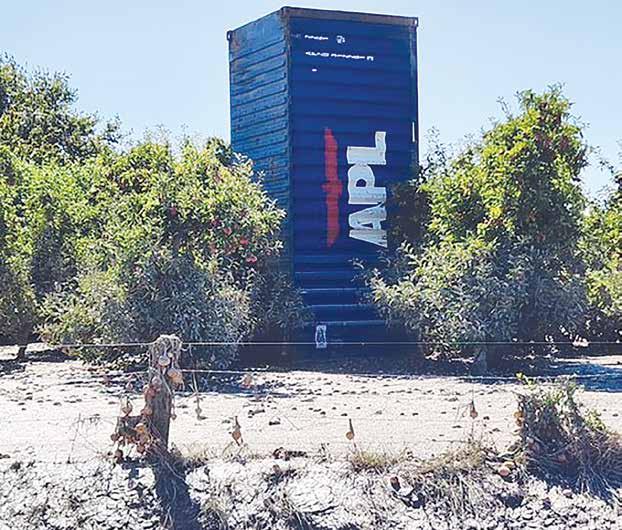
While he’s sure that industry groups are working hard behind the scenes, he says this is not enough.
Paynter believes that horticulture industry organisations should be doing more to get the media to keep the story front and centre of the news. He says if it loses traction in the media, it gives the Government and other authorities a chance to pull back.

“This is probably the biggest rural disaster this country has ever seen yet it has disappeared off the radar and become yesterday’s news,” he says.
“Many growers here feel absolutely abandoned by what’s happening.”
Replacement Spray Pumps & Spray Kits
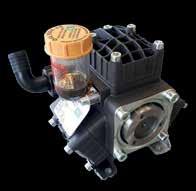


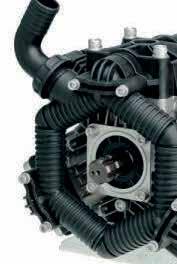

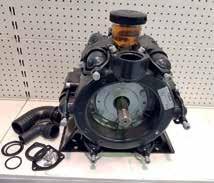




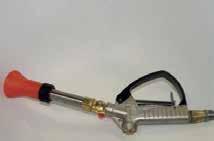


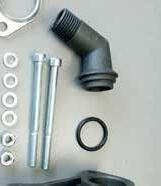


Webbline Agriculture is a direct importer/reseller of a full range of pumps from market-leading manufacturers, along with service kits and accessories. Large range in stock. Dealer enquiries are welcome.





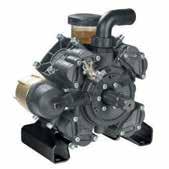


HORTNEWS MAY 2023, ISSUE 33 ISSN 2624-3490 (print) ISSN 2624-3504 (online) WWW.HORTNEWS.CO.NZ Vege harvesting by remote! – Page 11
Peter Burke peterb@ruralnews.co.nz
A shipping container – carried by floodwaters – standing starkly amongst the damaged apple trees in a Yummy Fruit orchard in the Hawkes Bay.
Paul Paynter
View online - www.webbline.co.nz Contact Ben 021 819 482 | ben.boakes@webbline.co.nz WAIKATO • MANAWATU • CANTERBURY • SOUTHLAND
Lavender business blooms
WHAT STARTED 15 years
ago as “pottering around” has developed into a niche award-winning business for Wairarapa lavender grower Jan Abernethy.
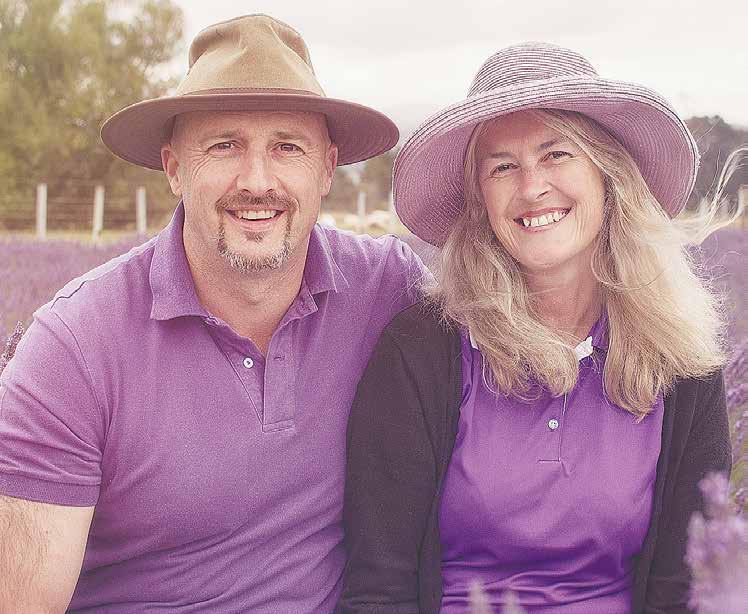
With husband Stuart, Jan owns Lavender Abbey, a spray-free 3ha lavender farm in Carterton. Today, over 4000 plants, made up of seven varieties, are grown annually.
The French lavender Grosso with its powerful fragrance and aromatic buds is the flagship variety. Its flowers are turned into 20 products including lavender oil. An English variety, Violet Intrigue, is also grown for oil.
The Abernethys moved to Wairarapa from Wellington 15 years ago and Jan told Hort News that they fell in love with lavender and its huge range of uses.
“When I look back at how we started and where we are now, there’s a great feeling of satisfaction,” she says.
“At first, I was pottering around with lavender plants and over time it developed into a hobby. For me, it’s all about enjoying and making products from lavender.”
Cultivating and growing lavender is hard work. At Lavender Abbey, the job typically starts in spring and finishes
LAVENDER ABBEY’S CROP:
• French lavender (Lavandula x intermedia ‘Grosso’) – Grosso has an extraordinary powerful fragrance and aromatic buds.
• English lavender (L. angustifolia ‘Pacific Blue’ ) – Pacific Blue is known for its sweeter fragrance, making it perfect for cooking, baking or a relaxing cup of tea.
• English lavender (L. angustifolia ‘Violet Intrigue’) – Violet Intrigue is a very special lavender oil, noted for its vibrant violet flower and heady soothing scent.
• The other varieties grown are Rosea, Blue Mountain White, Myra, Elizabeth and Hidcote.
in February when the flower crop is harvested and made into its multi award-winning lavender 100% pure essential oil using the steam distillation method.
“Using our lavender pure essential oil, we create a variety of natural lavender products which support health and wellness,” explains Jan.
“The best thing
about our NZ made lavender products is the fact they’re made with love from high-quality, unspoilt lavender grown in some of the world’s best quality soil in the freshest New Zealand air and sunshine.”
Jan and Stuart’s hard work at Lavender Abbey have been recognised, both locally and overseas.
Last year, they were awarded gold for Grosso and Violet Intrigue lavender oil at the prestigious US Lavender Sommelier awards. In September 2022, Lavender Abbey won the Best Lavender Oil in NZ for its Grosso oil, receiving the prestigious Eoin Johnson Memorial Trophy and the Ken Wilson Memo-
rial Trophy. They also received six other silver awards for other lavender oil varieties, and won the gold award in 2021 from the Australian Lavender Growers Association for its Violet Intrigue lavender oil.
The Abernethys are members of the New Zealand Lavender Growers Association, formed
in 1995 to promote production of lavender oil in New Zealand and to provide information to assist its members.
The association says its members are spread geographically from Katikati in the north to Dunedin in the south.
Summer is a great time to be on a lavender farm in NZ – that’s when flowers are in bloom. The purple flower beds also form the backdrop to many photoshoots for birthdays and weddings.
Visitor numbers at Lavender Abbey rise in summer thanks to the ‘pick your own lavender’ event. Jan says visitors from all over New Zealand turn up to “experience the aroma and beauty of lavender”.
“Every year in January, for the past 11 years, we’ve hosted a ‘pick your own lavender’ event at our Dalefield Road property in Carterton, just an hour’s drive from Wellington,” she told Hort News
“It is a ‘not to miss’ summer weekend event, where we throw open the gates to our lavender field so you can pick your own lavender and share in our slice of Provence.”
Since October 2022, visitors can shop at the ‘The Big Box of Lavender’, which stocks Lavender Abbey products, flowerpots and tins, candles, chinaware and linen, cards, and other gifts.
MAY 2023 2 HORTNEWS
Sudesh Kissun sudeshk@ruralnews.co.nz
Registration is FREE! KEEP UP-TO-DATE WITH OUR WEEKLY NEWSLETTER. NEVER MISS A STORY FACEBOOK.COM/RURALNEWS TWITTER.COM/RURAL_NEWS www.ruralnews.co.nz/enewsletter
Jan and Stuart Abernethy at their Lavender Abbey farm in the Wairarapa, which has bloomed into an award-winning business.
Big savings in cutting spray use
PUKEKOHE POTATO
growers have been told that adopting integrated pest management (IPM) practices will mean financial as well as environmental benefits.
Australian entomologist, Dr Paul Horne, told a recent Potatoes New Zealand research update breakfast meeting that he could give examples from his home country of hundreds of growers who had adopted IPM practices.
Not only had they done that, but had taken it further, reducing sprays for potato moth from ten to seven.
“That’s not farfetched – it’s basic biology,” Horne explained. “If you’re prepared to put in the effort, you can do the same, I’m absolutely certain.”
He pointed out how one grower of 20 years’ standing through adopting IPM was now using

less chemical over his whole growing operation than he had previously used on just one crop.
“It works,” he says.

Based in Victoria, most of the work of his company, IPM Technologies, is in reducing insecticide use by showing growers and their advisers the impact of chemicals on beneficial species. He and colleague Jessica Page, who have worked on IPM strategies and training
for over 25 years across a range of crops in Australia, are now developing an IPM strategy for tomato potato psyllid (TPP) both in Australia and NZ.
For many crops there were only three control agents: pesticides, management practices and

biological control.
“There’s nothing else,” he says. “That’s what you’ve got to look at.”
Horne added that an IPM system was never static and will change over time. Growers could try to add on as many options as they could to
build into their strategy.
“People ring us when there’s a crisis, when pesticides don’t work,” he says.
Pests were similar in New Zealand with the main problems for potatoes being potato tuber moth (PTM), which could
cause significant damage where there was no cool storage on or offshore.
Beneficial insects could be used such as parasitic wasps and damsel bugs, which were more important across the Tasman.
There were predatory thrips as well as pest
thrips and a parasitic wasp which stung PTM had been introduced over 50 years ago. There were now three of these wasps established in Australia, compared with just one in New Zealand. Horne said a big advantage was that PTM caterpillars could be pulled apart in the field to find the wasp maggots, instead of needing to be bred up in a laboratory “and then telling the grower they should have sprayed three weeks ago”.
“Use chemicals only as a supporting tool,” he told growers.
“Consider the impact that spraying could have on beneficials, choosing them based on the insects they wanted to look after.
“You might choose a soft chemical, rather than blasting everything away. And if you choose the wrong product, you can make things worse.”
• Article: Potatoes NZ

3 MAY 2023 HORTNEWS
“Consider the impact that spraying could have on beneficials, choosing them based on the insects they wanted to look after.”
GOLD STANDARD FOR
Designed specifically for kiwifruit orchards, with operator comfort at the forefront. • Ultra-low, 750mm seat height • Refined operator layout • Lowered foot plates for operator comfort • 82hp and 96hp engine options • 60O steering angle for manoeuvrability KIWI CLASSIC SERIES 320F/420F KIWI CLASSIC deutz nz 80-95HP FROM FINANCE OPTIONS AVAILABLE Contact us to arrange a finance deal that’s tailored for you. Power Farming NZ | www.powerfarming.co.nz | 0800 627 2225
Adopting IPM practices brings financial as well as environmental benefits for potato growers.
KIWIS
Real leadership needed
Peter Burke peterb@ruralnews.co.nz
THE ROLE of the banks is a critical component in the overall recovery plan for Hawke’s Bay, according to the HortNZ chair Barry O’Neil.
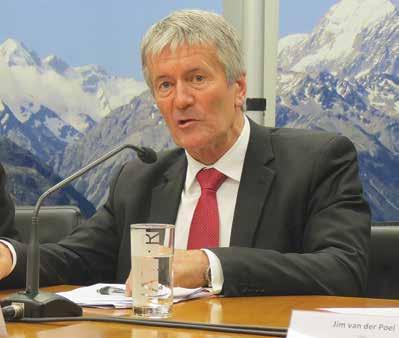

His comments come as frustration builds in the province with orchardists and commercial growers at their wits end, not knowing if and how they can get their businesses up and running.
O’Neil believes some pragmatic leadership is needed by the Government to get the ball rolling.
He admits it’s hard for the banks because some
of the land in question is likely to be mortgaged but is now worthless.
That would make it hard for the bank to take on more debt on a property.
O’Neil says this, coupled with inflation and high interest rates, adds to the complexity of the issue.
He says the reality is that it will take at least six years – probably longer –to re-establish an orchard.
O’Neil believes to do this will require some form of government intervention.

“The Government has traditionally done that with the Provincial Growth Fund where is looked at a sector and industry and invested in interest free loans
to support industry to expand and develop new





approaches,” he told Hort News
“A discussion along these lines with the Government will enable banks to maybe come in and offer support,” O’Neil adds. “But on their own, that would be very difficult.”
The problems in Hawke’s Bay came to a head recently when an open letter was sent to the Government by most of the produce groups –such as NZKGI, apples and pears, summerfruit, citrus, asparagus, strawberry, processed vegetables, onions, persimmon, feijoa and HortNZ. The letter said, while the Government responded swiftly to the immediate crisis, there was now an
urgent need for recovery funding, re-establishment and rebuild. The sector has called on the Government to make decisions on this as soon as possible and also to accelerate the infrastructure repair.
O’Neil says the problems in Hawke’s Bay dealing with silt are mind boggling. “There are concerns [that] some of the silt is contaminated,” he told Hort News
“It needs to be moved quickly but growers are telling me they can’t get approval from the authorities to do this, which is frustrating their ability to move on.”
@rural_news
facebook.com/ruralnews
We’re going as fast as we can McCLAY’S OVERTURE
AGRICULTURE MINISTER Damien
O’Connor is defending the time it’s taking to produce a long-term recovery package for Hawke’s Bay.
O’Connor told Hort News the Government has already made $75 million available for the clean-up. But he says it would be highly irresponsible of the Government to ‘throw out money without a proper plan’ and says this (plan) is now being worked through.
O’Connor says suggestions that a plan similar to what was rolled out in the 2004 Manawatu floods is no longer valid.
“Times have shifted and the challenges facing us now are quite different from that event in the early 2000s,” he claims. “It is important that the recovery package in now is appropriate, fair and is actually sustainable.”
O’Connor adds that the Government is very aware of the biological issue facing the hort sector and that time does not stand still and is moving as quickly as it can. However, he points out that ultimately the recovery in some areas will be
dependent on insurance companies’ appetite for risk and on the banks’ preparedness to fund.
“Any government support must be complementary to, and not instead of, those other parties.”
O’Connor says the Government has been working with regional councils and grower organisations on how
to deal with what he describes as a complex disaster in many parts of the country.
These involve dealing with silt, reinstating infrastructure, long term river protection and the options for the overall recovery.
“Announcements on some of these are due in the near future,” he says.
National’s spokesperson on agriculture, Todd McClay, has entered the debate on the Hawke’s Bay crisis.
Speaking at a woolshed meeting with his boss, Christopher Luxon, McClay says there were a lot of upset and angry people in the region because of the delay in an announcement of longterm recovery plans.
He says it’s hard on people who’ve lost their livelihoods and have no certainty in their lives.
“The Government has made a big promise to Hawke’s Bay to get this sorted out quickly. I am hearing that people are concerned, disappointed, disillusioned and extremely depressed at the lack of action.”
McClay says he intends to approach Agriculture Minister Damien O’Connor to see if there can be a bipartisan approach to the recovery.
O’Connor says there has never been a political approach to the recovery but is happy to meet with McClay or any other politician.
“The door is always open for any good ideas from National – if they have any,” he says.
O’Connor adds that one has to remember that other parts of the country have also been affected such as Dargaville where the kumara crop
was virtually wiped out. He says there is huge demand on the Government at the moment with people losing homes in other regions.
MAY 2023 4 HORTNEWS
Hort NZ chair Barry O’Neil believes pragmatic leadership is needed by the Government to get the ball rolling.
Available at your local FELCO Stockist. Heiniger is the exclusive FELCO distributor and authorised service centre in NZ - contact us to find a FELCO dealer near you. (03) 349 8282 | heiniger.co.nz Swiss precision. Made to last. FELCO 211 LOPPERS The perfect balance of power and manoeuvrability. The FELCO 211 range feature lightweight aluminium handles for comfortable cutting and curved cutting heads to pull in and easily slice through branches FELCO POWER TOOLS Power through even the biggest jobs with ease. Designed to act as an extension of your body, the new FELCO Power Blade series feature lightweight, ergonomic handles for comfortable pruning all day long. NEW
Agriculture Minister Damien O’Connor is defending the time it’s taking to produce a longterm recovery package for Hawke’s Bay.
Say hello to low carbon crops
Its time to make the transition, tap into the benefits of decarbonisation and prepare your business for the future.
The Covered Cropping Decarbonisation Pathway will give growers access to:

• International expertise
• Best practice guidance
• Bespoke tools and resources.
Discover more at eeca.govt.nz/coveredcropping

Goal to double local avocado consumption
the local avocado market relies on New Zealanders eating more.
NEW ZEALANDERS are being urged to eat more avocados and support local growers.
New Zealand Avocado, which represents local growers, has set the bold goal for New Zealanders to more than double their average avocado intake from 16 avocados per year to 40.
Currently Mexico leads the world, eating their way through 40 avocados (or 10kg) per person every year, with many other countries averaging around 28 avocados per person.
NZ Avocado chief executive Jen Scoular says the sustainability of

“While 40 a year each seems like a lofty goal, it’s not impossible. In fact, a percentage of the New Zealand population (avocado lovers!) are already eating an astonishing 16 per month,” she says.
“This is great news for New Zealand growers, because we don’t import avocados. We grow enough here for the whole population, so every avocado you eat in Aotearoa supports our local economy.
“There was excellent discussion amongst all the 33 countries represented at the Congress about the need to drive demand domestically
and increase demand in our own countries,” says Scoular.

According
are eaten by just 5% of the population.
Scoular says consumption hasn’t peaked so there is huge potential for growth.
“Avocados are a source of protein, good fats and carbohydrates and they’re suitable for vegetarians, vegans, as well as those on sugar-free, glutenfree and keto diets,” says Scoular.
The three-day congress attracted 750 delegates from 32 countries.
Before the congress, delegates from overseas visited eight locations including sites in Glenbrook, Tapora, Whangarei and the Bay of Plenty to experience NZ’s diverse avocado growing systems and innovative supply
chain processes.
Association of Avocado Exporting Producers and Packers of Mexico (APEAM) chief executive Armando Lopez says the growers and industry delegates who joined the congress from Mexico are thrilled that it was possible to travel to the successful event.
“Especially knowing the big effort that the New Zealand team has put in, given the pandemic challenges of the last four years. This is the moment that the worldwide avocado industry can come together to be aligned for the future in sustainability and quality – and the marketing of health benefits of our fruit for consumption,”
New Sudesh Kissun sudeshk@ruralnews.co.nz
GETTING READY!
Zealand-UK
last week as trade officials neared completing the deal after little more than a year of negotiations. Kuperus says the NZ
says Lopez.
Delegates are also determined to share the important sustainability story behind avocados.
“There is such an amazing opportunity for the avocado sector to promote the multitude of benefits provided by this fruit. Avocados meet the world’s need for high nutrition, they have amazing health attributes and they’re delicious at the same time.”
Before the congress ended, South Africa was announced as host of the 11th World Avocado Congress to be held in 2027.
“Congratulations to South Africa. It is a huge honour to host this important event,” says Scoular.
NewZealandonionindustrywasworth $200 million back to the grower, 85% of which came from exports. MeandealwhileApicultureNewZealandsaysthe industrywillbeagreatoutcomeforthebee andwillimprovecompetitivenessinoneoftheirlargestexportmar-





MANGAWEKAASPARAGUSmanager SamRaineyoverseesan80hectare asparagusinthecentralNorthIsland. WhenHortNewsvisitedtheproperty inlateSeptember,Raineyandhisstaff wereinthefinalstagesofpreparing fortheharvest.Thepackhousewas beingsetupandatthesametimethe firstspearsofasparaguswerestarting toappear.Whilethetotalsizeofthe propertyis80hectares,theywillpick just65hectaresthisseason–which equatestoupto250tonnes. Seestorypages4and5. Replacement Spray Pumps & Spray Kits Webbline Agriculture is a direct importer/reseller of a full range of pumps from market-leading manufacturers, along with service kits and accessories. Large range in stock. Dealer enquiries are welcome. View online - www.webbline.co.nz Contact Ben 021 819 482 | ben.boakes@webbline.co.nz WAIKATO •CANTERBURY • SOUTHLAND branches NOW PUBLISHED MONTHLY! To book your advert contact your local sales rep

MAY 2023 6 HORTNEWS
to NZ Avocado, 60% of all avocados grown in New Zealand
HORTNEWS Introducing Hort News, a national publication serving the needs of our booming horticulture sector. Distributed with the leading national farming publication Rural News, Hort News will be delivered to all key horticulture regions nationwide. It is the complete solution for readers and advertisers, covering every aspect of the wider horticulture industry – news, agribusiness, management, markets, machinery and technology. Contact: STEPHEN POLLARD Auckland Sales Representative Ph 021 963 166 LISA WISE Waikato Sales Representative Ph 027 369 9218 RON MACKAY Wellington Sales Representative Ph 021 453 914 KAYE SUTHERLAND Christchurch Sales Representative Ph 021 221 1994 RURAL NEWS TO ALL FARMERS, FOR ALL FARMERS Publishers of • It’s the one-stop way to reach the horticultural sector • News and information for all types of growers • 10,000 nationwide distribution • Sent out with the trusted and established publication Rural News HORTNEWS NOVEMBER 2021 ISSUE 19 ISSN 2624-3490 ) ISSN 2624-3504 online WWW.HORTNEWS.CO.NZ Bumper cherry –predictedcrop Page 7 Sweet result for hort! SOME HORTICULTURE farmers are also bracing for financial relief from the proposed free trade agreement between New Zealand and the United Kingdom. Apple, pear and onion growers are among those set to benefit although notasbigmajormeatanddairyexportAlanNZApplesandPearschiefexecutive PollardsaysatthemomenttheUK is a $100 million market for growers, consistently ranking in the top two or three. “We have a quota between August and December where volume above that quota attracts an 8% tariff,” he told Hort News Under the proposed FTA, the tariff on pears will be removed on day one, with the tariff on apples reducing over three years “So, there is some financial relief andwebenefitfromamorewelcoming regulatory environment,” says Pollard. Onion growers will face zero tariff from day one. The tariff on New Zea- land onions is currently 8%. New Zealand currently exports $11 million worth of onions to the United King- domOnionsannually. NZ chief executive James Kuperus says the FTA will ensure that this country’s onion exports continue to grow as the world comes to terms with Covid. “Trade and exporting ben- efits a diverse range of New Zealand businesses,” he says. “Without clear trading arrange- ments, improved market access and reduced tariffs, it is extremely difficult totoexportfromthebottomoftheworld larger economies like the United Kingdom. “Of immediate benefit to the onion sectoristheexpectationoftariffsbeing eliminated on onions, once the agree- ment comes into force.” The New Zealand Government announced the details of
Sudesh Kissun sudeshk@ruralnews.co.nz
an “in-prin- ciple” kets. The UK consistently ranks as one of top three export markets for New Zealand honey and is worth $70 mil- lion annually. “We have strong ties with UK customers, with a long his- tory of exporting high-quality honey products there. However, the current in-quota tariff rate of 16 per cent hasbeenasignificantbarriertotrade,”says KarinKos,chiefexecutiveofApiculture New Zealand.
FTA
onion sector is extremely grateful for the hard work of New Zealand’s negotiatorsanddiplomatswhohaveworked tirelessly to conclude this agreement. “The New Zealand team has had toatjoinZoomcallswiththeircounterparts night,extremelyinconvenienttimesofthe for example.” The conclusion of this agreement willbenefitoniongrowersandregional communities, from Pukekohe to Can- terbury. Onions are an important rota- tion crop for many vegetable growers. Having onions in a rotation allows growers to rotate between other crops such as lettuces, potatoes, carrots etc, which helps to control pests and diseases. In 2019, the
NZ Avocado chief executive Jen Scoular.
Bracing for bad news
LISTED PRODUCE grower and exporter Seeka says a substantial drop in kiwifruit volumes this year may push the company towards an operating loss.
In a note to the New Zealand Stock Exchange last month, Seeka chief executive Michael Franks says early season kiwifruit volumes packed by the company are well down on estimate – reflecting climatic events, including an atypically mild winter followed by a severe late frost, cyclone and more recently, hail.
Yields are well down on expectation, Franks adds.
“Overall, the company estimates that total volumes could be down by 20% on the previous year and may result in a forecast operating loss for the current year,” he says.
“The company has proactively reduced costs, slowed its capital expenditure programme and continued with its asset reviews.”
Seeka advises that it is too early to accurately estimate full year guidance and will update the market on earnings when there is greater certainty of the current year’s financial outlook.
“Once the harvest is complete, the market will be updated.”
Seeka is already reeling from a challenging 2022. While revenue last year was up 13% to $348 million, net profit

plunged 56% compared to 2021 to $6.5m.
The company and its supplying growers grappled with Covid-19, extreme labour shortages, shipping disruptions, lower kiwifruit yields and poor fruit quality – all impacting returns.

At its annual meeting two weeks ago, chairman Fred Hutchings described 2022 as “a very difficult year”.
Hutchings says the

pounded by increased costs related to Covid-19, lower kiwifruit market returns from Zespri and higher fruit loss at Opotiki Packing and Coolstorage (OPAC) which it acquired in 2021.
Franks says harvest 2022 kiwifruit yields were down across the industry, impacting revenues from Seeka’s core post-harvest business. Kiwifruit storage performance, both onshore and offshore, further impacted returns
“Despite the challenging season, Seeka achieved an increase in revenues to $348 million as we attracted new growers to our business,” he adds.
“Packing operations, however, peaked during the Omicron wave and the industry was severely short staffed. Higher labour costs and lower yields impacted margins and contributed to a drop in EBITDA to $46 million and a net profit after tax
the harvest, Seeka has fully reviewed its supply chain operations from the orchard to load-out.
He adds the company is focused on achieving excellence in fruit handling in 2023.

“We are anticipating an improved labour supply with a large increase in RSE workers from the Pacific and Malaysia, and a normalisation of travel.”
Franks believes the completion of a highly
automation projects at Gisborne and at its largest site near Te Puke, will lift post-harvest capacity, improve fruit handling and significantly reduce the demand for packhouse labour.
Franks says since Cyclone Gabrielle the company has been inspecting post-harvest sites and supplying orchards to assess the potential impact on harvest 2023.
“While we did not see
we anticipate that the full impact on the crops will remain unknown until the fruit is harvested.”
Seeka’s core Bay of Plenty kiwifruit growing region was spared the worst of the weather and was not materially impacted.
The Hawke’s Bay, Gisborne, Coromandel and Kerikeri regions had varying degrees of impact, with Hawke’s Bay being worst hit. Approximately 5% of Seeka’s kiwifruit
7 MAY 2023 HORTNEWS
Sudesh Kissun sudeshk@ruralnews.co.nz
Seeka chief executive Michael Franks says harvest 2022 kiwifruit yields were down across the industry, impacting revenues from its core post-harvest business.
Farmer and grower confidence slowly rises from the depths
RABOBANK’S LATEST
Rural Confidence survey has found that while farmers’ sentiments are still in deeply negative territory, they have crept up from historic lows in late 2022.
Completed in late March, the recent survey found farmer confidence was up on the previous quarter – with net confidence reading rising from -71% to -58%.
It found that the number of farmers expecting conditions in the agricultural economy to improve in the coming 12 months had risen for 4% to 5%. Meanwhile, the percentage or farmers expecting conditions to worsen fell from 75% to 63%.

A total of 31% were anticipating the agricultural economy to remain stable, up from 19% previously.
Rabobank says the higher confidence in the broader agri economy has been partly driven by improved sentiment among sheep and beef farmers and horticulturalists. It put this down to improved demand for New Zealand red meat from the Chinese market following the abandonment of China’s ZeroCovid policy late last year and subsequent reopening of their food service sector.
Rabobank New Zea-
land chief executive Todd Charteris says while sector confidence was still very low, it was pleasing to see it improving. The uptick in confidence came despite incredibly challenging conditions for many primary producers in the early part of 2023 with Cyclone Gabrielle and South Island droughts.
He added that strong demand for fruit and vegetables in domestic and international markets have helped to hold up prices after inclement weather disrupted production in several regions. On the other hand, dairy farmers were now even more pessimistic about the broader agrieconomy than they were last quarter.
“Demand out of China has been slower to return for dairy products than it has for other food products and we’ve also seen increased global supply act as a constraint on prices,” he admitted.
“As a result, Fonterra lowered their milk price forecast. The prospect of a lower payout, coupled with ongoing elevated


farm input prices, has further eroded the already dwindling confidence of the country’s dairy farmers.”
Among farmers with an optimistic outlook across all sectors, the survey found overseas markets (54%), demand (34%) and rising commodity prices (31%) were the major sources of optimism, while major concerns continued to be rising input costs (65%) and government policy (53%).
Farmers’ confidence in their own business performance was up marginally on last quarter, with the net reading rising from -53% to -45%. 26% of those with a negative outlook nominated ‘other’ factors as a reason for holding a pessimistic view on the agri-economy.
Charteris says while farm input prices had been a key concern for several quarters, Rabobank was seeing some softening of key input prices in global markets – particularly fertiliser –which was expected to filter through to New Zea land prices in the near
Rabobank New Zealand chief executive Todd Charteris says while sector confidence was still very low, it was pleasing to see it improving and added that strong demand for fruit and vegetables in domestic and international markets have helped to hold up prices.

term.
“As with confidence in the broader economy, the latest survey found growers and sheep and


for their own businesses, with dairy farmers now more pessimistic,” Charteris says.
“You have to go all the
economic recession.” Farmer investment intentions were back slightly from last quarter, while farm business viability marginally improved.
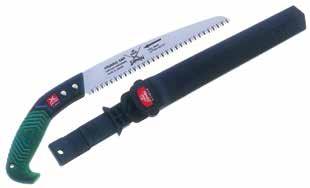
MAY 2023 8 HORTNEWS
farmers on this measure. This survey also found labour issues cited frequently in the verbatim responses as well as several new concerns including weather events and Leo Argent
trader FARMLANDS DEALS VISIT US IN-STORE OR SHOP ONLINE 1012285 1012286 *Terms and Conditions apply. Samurai Bushi Saw Straight Complete with Sheath FAR_10805 GET 20% OFF BAHCO BCL23 OR BCL24 WHEN YOU TRADE IN YOUR OLD ELECTRIC SECATEURS Vistaseal Pruning Wound Dressing 2L 1035646 Vistaseal Pruning Wound Dressing 10L 1035647 BUY 2X 2L AND GET 2L FREE BUY 3X 10L AND GET 10L FREE
‘Strong demand for fruit and vegetables in domestic and international markets have helped to hold up prices.’
Apple export quantities down
TOTAL EXPORTS of apples from the port of Napier in March 2023 were valued at $61 million, 2% up from March last year, according to data released by Stats NZ.
It also reports that the quantity of apples exported from the port of Napier fell 17%, to 20 million kilograms, in March
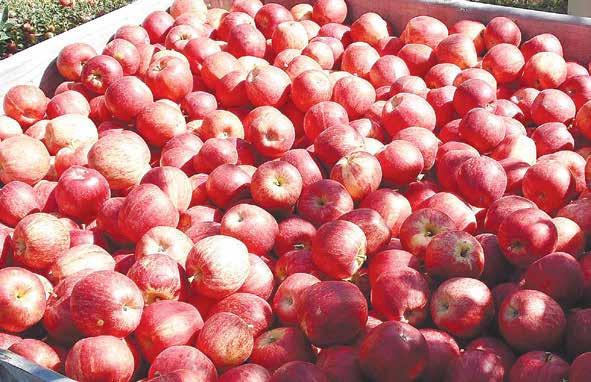
$15 million to Vietnam, and $8.8 million to Taiwan.
Total exports from the port of Napier fell $277 million (28%) in the first three months of 2023 compared with their respective 2022 months. This fall was led by meat, down $176 million (42%).
Stats NZ also reports
2023. The average quantity of apples exported from the port of Napier in March months, from 2018 to 2022, was 34 million kilograms.
Stats NZ says over the past 12 months, 62% of New Zealand apple exports (by value) were from the port of Napier. The ports of Tauranga and Nelson exported 15 and 14%, respectively.
Meanwhile, Stats NZ reports that total apple exports from New Zealand in March 2023 were valued at $99 million, up $4.4 million from March 2022. Apple season usually spans from February to October, with April, May, and June the peak months for apple exports.
“Apple export values are holding up well for the season so far, despite a fall in volume,” says international trade manager Al Allen.
“As exports of apples move into their peak season, we may see further effects from the cyclones and other weather events from early 2023.”
In March 2023, $31 million worth of apples were exported to China,
a steady start to kiwifruit season
It says kiwifruit exports were up $7.4 million (5.9%) in March 2023, compared with March 2022. This was almost all Gold kiwifruit, which is typical for the first month of the season. Kiwifruit exports were mainly from the port of Tauranga (94%) in March 2023. Japan received over half of the total kiwifruit exported in March 2023.
The kiwifruit season typically runs from March to November.
It also reports that vegetable exports also rose in March.
Onion exports in March 2023 were valued at $44 million, up 88% from March 2022, with the quantity up 25%. March is usually the peak month for the onion export season.
Total exports of squash in March 2023 were valued at $19 million, up 22% from March 2022, while the quantity decreased 17%.
Onion and squash export values combined made up 70% of total NZ vegetable exports in March 2023.
GOING TO THE FIELDAYS?




Better make sure farmers know where you’ll be and what you have to offer.
Rural News National Fieldays feature is the best place to prime farmers and ensure you maximise your Fieldays spend.
9 MAY 2023 HORTNEWS
NATIONAL FIELDAYS
“As exports of apples move into their peak season, we may see further effects from the cyclones and other weather events from early 2023.”
WHY USE RURAL NEWS? • Delivered fortnightly to all farmers. • Larger format for bigger impression • Readership 170,000 (2022 Nielsen Rural Survey) • Circulation 78,000 The 2022 Nielsen Rural Survey shows that 88% of commercial farmers regularly read rural newspapers. It shows that 73% of them will visit a website related to a product seen in rural print, 70% will go to an event (e.g. Fieldays) seen in print, and 58% will decide where to buy something based on what they read in rural publications. CONTACT YOUR SALES REPRESENTATIVE: JUNE 14-17, 2023 AUCKLAND: Stephen Pollard ............. Ph 021 963 166 WAIKATO: Lisa Wise Ph 027 369 9218 WELLINGTON: Ron Mackay Ph 021 453 914 CHRISTCHURCH: Kaye Sutherland Ph 021 221 1994 Phone 09-307 0399 www.ruralnewsgroup.co.nz RURAL NEWS TO ALL FARMERS, FOR ALL FARMERS FEATURE: JUNE 6, 2023 MAY 24 MAY 30 BOOKING DEADLINE: MATERIAL DEADLINE:
PREVIEW
H
H
Consistency needed over regulations
ONE OF NZ’s largest commercial vegetable growers says NZ can’t have piecemeal regulations that differ from region to region.
Jay Clarke is director of the family-owned commercial growing business Woodhaven in the Horowhenua, which was started by his father John.
Clarke was a keynote speaker at Rabobank’s recent agricultural symposium in Sydney, which attracted more than 1600 people from Australasia. His presentation on the sustainable practices of his company Woodhaven attracted a lot of positive feedback from delegates at the event.

Clarke told Hort News he loved the event and it was great to meet
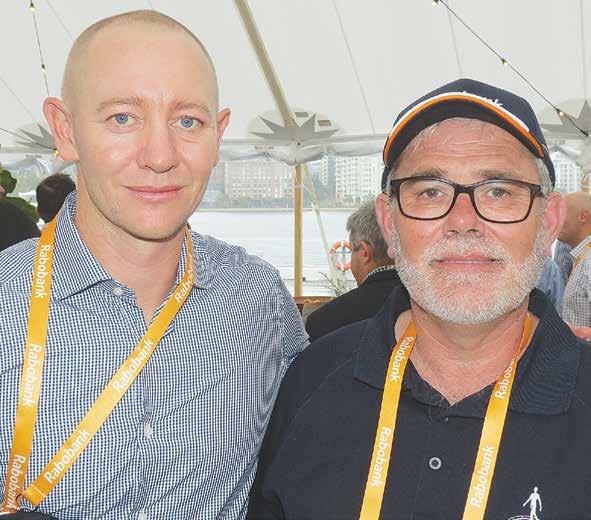
a number of talented people from around the world and hear their perspectives. He was also pleased with the response to his address.
He says, at present, NZ has a variable regulatory approach between regions and that this needs to change.
“You have got a situation where a huge proportion of the vegetable production in the Hori-

zons region is essentially illegal – it requires a consent and there is no pathway for a consent at the moment,” Clarke told Hort News “But there are other regions like Northland where there is no regulatory requirement whatsoever – so there is a lot of difference. As an industry we want to see that tidied up and see nationally consistent pathways that enable more healthy food production.”
Clarke says few people argue about the direction
taken in terms of sustainability but believes there is some valid debate about how things might change in terms of farm systems. He says times are changing and while the cost of vegetables will come down, the days of a 99 cent lettuce are gone forever.
Clarke says the cost base for the producer has moved too much and it’s unsustainable for companies like his to sell at very low prices. He told the conference vegetable production is largely a

domestic industry in NZ.
“It’s quite remarkable that all the veggies sold in NZ are produced on just 0.01% of the available agricultural land.”
Clarke says the family company Woodhaven has invested heavily in providing quality incentives for staff – including scholarships. He says this is for good reason as crops need good skilled people to harvest them –especially with the type and perishability of the crops Woodhaven produce.
MAY 2023 10 HORTNEWS
Peter Burke peterb@ruralnews.co.nz
Woodhaven director Jay Clarke and manager Shane Richardson at the Rabobank agricultural symposium in Sydney.
www.ruralnews.co.nz BREAKING NEWS MANAGEMENT S MARKETS & TRENDS MACHINERY REVIEWS COMPETITIO AND MUCH MORE... Check out our website
Jay Clarke giving his presentation on the sustainable practices of his company Woodhaven at the Rabobank agricultural symposium in Sydney last month.
Vege harvesting by remote!
growers use an extended cable behind the tractor to operate it remotely.
DUTCH CASE IH and Steyr tractor dealer, Van der Werf Mecanisatie – based at Zwaagdijk, north of Amsterdam – has developed a remote-control unit that allows cabbage and cauliflower growers to harvest without a driver seated in the tractor cab.
While self-propelled mechanical harvesters continue to make inroads, most Dutch growers continue to cut cabbages and cauliflowers by hand.
These are centred around placing the cut vegetables on lateral conveyors and a packing platform carried behind a tractor.
Typically operating at creep speeds as slow as 130m/hour, most
Van der Werf has taken the format a stage further and ditched the cable with a dedicated remote-control unit. Recently shown on a Case IH Maxxum 115 at a local machinery show, the conversion has been on offer for many years and the dealer reckons to have sold in excess of 100 systems, all over Holland – mainly to cauliflower growers.
Activating the system is said to be easy, with only three steps. After the tractor is started and set at idle, the operator engages the creeper gears and turns on the remote unit, which connects to an on-board receiver.

The remote can be programmed to only start the tractor and reverse
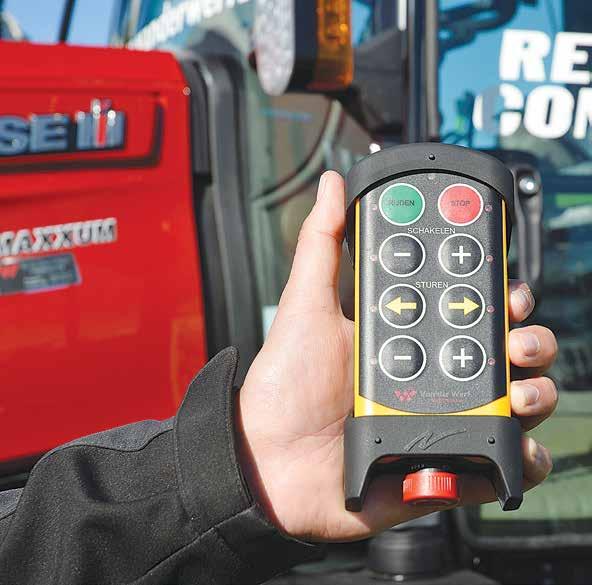
it. However, most growers opt for a six-function configuration including stop, forward, gear changes or down and steering to the left or right. The remote system is only used when crossing a field, so headland turns are carried out by the operator.
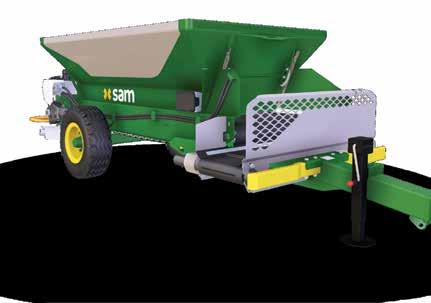

The dealer notes that the Case IH Maxxum is the most popular tractor for the conversion but has also installed the kit on several New Holland and Steyr tractors.
The easiest conversion is for tractors with a mechanical transmission, with the dealer noting that CVT transmissions are very difficult to automate.


Depending on the tractor and the number of functions required, the cost of the conversion is typically around $7,000 to $8,500.


NEW PLANT+FOOD BOSS





AS OF 1 May, Plant & Food Research has a new chief executive in Mark Piper.

Board chair Nicola Shadbolt says they were happy to appoint Piper, who has 30 years global experience in the food and primary sectors, from a wide field of high calibre applicants.
“We are thrilled with the calibre of people who came forward wanting to be part of our organisation. This is testimony to the work of our people and our reputation for high quality, impactful science,” she says.
“Mark’s passion is clear and he takes great energy from its potential to create a positive and sustainable future. I know Mark will lead Plant & Food Research with innovation, integrity and respect.”
Piper has previously worked at Fonterra, with the last five years as a research and development director along with international relations in Japan and America. Piper takes over from David Hughes, who announced his retirement in late 2022. Hughes will remain on board throughout May in an advisory capacity. - Leo Argent
Ph
MAY 2023 11 HORTNEWS
Mark Daniel markd@ruralnews.co.nz
A remote-controlled unit allows cabbage and cauliflower growers to harvest without a driver seated in the tractor cab.
SAM ORCHARD SPREADERS From lime to gypsum & even mulch. Simple, accurate & very very versatile. Simple to use and maintain Smart design Smart technology Mega reliable Built to last Proudly NZMade Sinceforever. Spread from the back. 2-for-1! With no change-over time. Band & pile from the front. Strong. Simple. Smart. GAME SCAN WITH PHONE CAMERA FOR MORE INFO
07 847 8492
Burying the problem
ALPEGO INVERSA’S
rotary cultivator buries stones, clods and trash to deliver a fine seed bed on the surface for consistent planting depth and uniform germination.
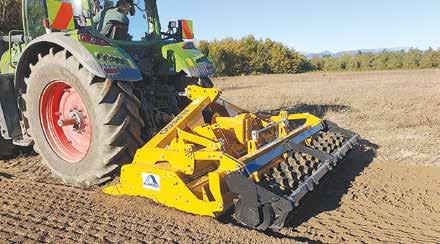
While not a new concept, it also allows harvesting machinery to work more efficiently and reduce crop damage from bruising in the case for root crops.
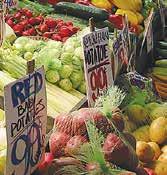
Its centrally mounted gearbox features a reversed drive, so the rotor cuts upwards rather than downward like a normal rotary hoe. Mate-
rial, including soil stones, clods and residue, is lifted over the rotor, before passing through a twincombed sorting grid. This deflects any stones, clods or debris downwards, while letting the finer soil move rearwards, before it is dropped over the trash and levelled, with final consolidation with a rear packer roller.
The overall effect is a revised soil profile, with larger diameter objects like the stones in the base and fine soil above, offering better planting conditions, with the additional benefit of better drainage.
The Alpego Inversa IZ model offers a cen-
tral drive gearbox, with a maximum input capacity of 280hp – although it can be easily run with a 120hp tractor.
The central gearbox drive to the rotor differs
A NEW WAY FORWARD
WHILE WE have become familiar with ISOBUS enabled planters and sprayers, it’s not normally in the sights of power harrow manufacturers.
However, cultivation and seeding specialist Maschio has bucked the trend, with the recent release of its Toro Isotronic folding power harrow.
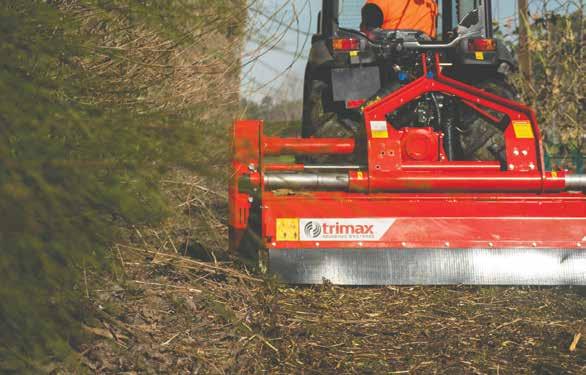
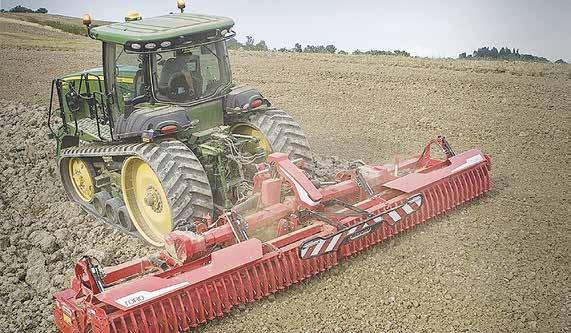
Available in 5, 6 and 7 metre working widths, the 4.3 to 5.1 tonne heavyweights. The new models offer a range of new features designed to increase production and extend the service life of the machines.
The ISOBUS functions
include the monitoring areas such as power consumption, gearbox speeds and operating temperatures, working depth, hours/hectares worked, drive shaft loadings – as well as the switch from working to transport position.
Increases in gearbox operating temperatures might suggest the oil levels need checking, that forward speed needs reducing, or an adjustment needs to be made to working depth. Likewise, driveshaft torque monitoring might indicate that forward speed is too high or depth is too great and driveshaft slip detection might mean a
foreign object is jammed between the rotors. Combined, this improved machine monitoring should help increase productivity and protect the machine against premature failures or consequential damage.
Additionally, the central gearbox features an improved cooling system. This allows the machine to work at optimum operating temperatures in hot zones, while the driveshafts to the lateral gearboxes are also monitored for proper alignment after moving from the transport to work position.
Elsewhere around the machine, a range of
from traditional rotary hoes which use a lateral transfer case at the side of the machine. Alpego claims this provides better power delivery with no driveline losses,
a rotor suspended at four mounting points rather than two and a significant reduction in the number of driveline components. The popular IZ 300 –held in stock by importer
Origin Ag – offers a working width working of 2930mm, a transport width of 3015mm and an operating weight of 2130kg.
The machine has a working depth of 250mm and fitted with a 520mm rear packer roller assembly for consolidation and moisture retention. An optional cage roller is also available for heavier sticky soils or for reduced consolidation.
For those looking for more site or system-specific machines, indented cultivators are available in a wide range of configurations. This includes the IZ series in 3.6 or 4 metre
working widths. The IG series – suitable for tractors of 100 to 170hp range – in 2.5 or 3 metre variants.
Additionally, the Poker folding range is suitable for tractors of 130 to 280hp in 3.6, 4, 4.6 and 5 metre versions.
Manufactured using Swedish sourced finegrain, high tensile steel throughout – and complemented by high quality bearings and components – the Inversa range is endorsed by the manufacturers’ two-year full warranty.
www.originag.co.nz
@rural_news
facebook.com/ruralnews
improvements include a larger 550mm diameter rear packer roller, said to improve flotation; the increased weight gives better consolidation and a finer tilth; and
the roller is supported on improved Blindato bearing assemblies, incorporating new polymide/ polyurethane seal to stop moisture and dirt ingress.
Behind the rotor and
ahead of the rear roller, a new levelling bar is now 200mm high. This compares to the 160mm of the old design, as well as 30mm nearer the tines to increase clod breakdown.
Other useful features include a new LED lighting system and a modified PTO shaft stowage bracket. There are also heavy-duty steel covers over key components.
MAY 2023 12 HORTNEWS
Mark Daniel markd@ruralnews.co.nz
An
ISOBUS
monitoring things
MULCH BRANCHES UP TO 90MM IN DIAMETER Are you hitting your target market? Contact your local sales representative for more information ✔ BREAKING NEWS ✔ MACHINERY REVIEWS ✔ MANAGEMENT STORIES ✔ AND MUCH MORE... HORTNEWS RURAL NEWS TO ALL FARMERS, FOR ALL FARMERS Auckland Stephen Pollard Ph 021-963 166 Waikato Lisa Wise Ph 027-369 9218 Wellington Ron Mackay Ph 021-453 914 Christchurch Kaye Sutherland Ph 021-221 1994
Alpego Inversa cultivator working in stony paddock delivers a fine seed bed on the surface for consistent planting depth and uniform germination. Maschio’s Toro Isotronic folding power harrow comes with
functions for
such as gearbox speeds, working depth, hours/hectares worked and drive shaft loadings.









































































